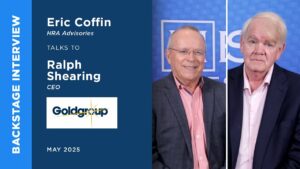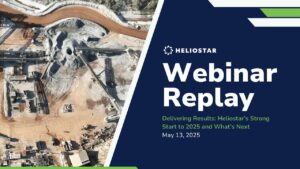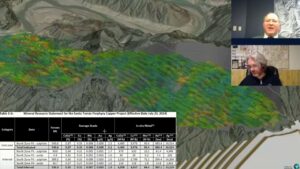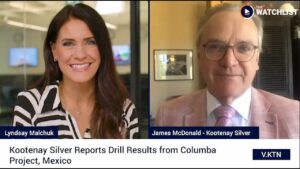COEUR D'ALENE, Idaho–(BUSINESS WIRE)– Hecla Mining Company (NYSE:HL) today announced fourth quarter and year end 2016 financial and operating results.
FOURTH QUARTER AND FULL YEAR 2016 HIGHLIGHTS | ||||||||||||
| Q4 2016 | Q4/16 vs. Q4/15 | 2016 | 2016 vs. 2015 | |||||||||
| Net income applicable to common shareholders | $20.1 M | $0.05/share | 132% | $69.0 M | $0.18/share | 179% | ||||||
| Adjusted net income1 | $11.2 M | $0.03/share | 34% | $60.7 M | $0.16/share | 277% | ||||||
| Sales | $164.2 M | 42% | $646.0 M | 46% | ||||||||
| Cash provided by operating activities | $52.1 M | 90% | $225.3 M | 111% | ||||||||
| Adjusted EBITDA2 | $65.1 M | 89% | $264.6 M | 127% | ||||||||
| Net debt/adjusted EBITDA2,5 | 1.2X | (61)% | ||||||||||
| Free cash flow 3 | $7.7 M | 152% | $44.5 M | 243% | ||||||||
| Cash and cash eq. & short term investments | $198.9 M | 28% | $198.9 M | 28% | ||||||||
| Silver production | 3.98 M oz | 9% | 17.2 M oz | 48% | ||||||||
| Gold production | 63.2 K oz | 5% | 233.9 K oz | 24% | ||||||||
| Silver equivalent production4 | 12.1 M oz | 108% | 46.1 M oz | 123% | ||||||||
- San Sebastian produced 4.3 million ounces of silver and 34,042 ounces of gold, generating $93.9 million of cash provided by operating activities with only $1.5 million of capital.
- East Mine Crown Pillar (EMCP) pit at Casa Berardi fully operational, increasing mill throughput and gold production.
- First hardrock mining company to receive independent certification under CORESafety.
- Maintained proven and probable silver reserve levels despite record silver production, lowered exploration budget and $14.50/oz silver used for calculation, among the lowest in industry.
- Acquired the Montanore Project, a large silver-copper development asset in Montana.
- Estimated 2017 silver equivalent production of 46.5-49.4 million ounces (or gold equivalent production of 655,000-696,000 ounces), higher than 2016’s record production.10
“We finished 2016 strongly, with record silver and silver equivalent production for the year and robust performance at all our mines driving record sales, strong net income and more than doubling adjusted EBITDA over last year,” said Phillips S. Baker, Jr., Hecla’s President and CEO. “And despite using one of the most conservative price assumptions in the industry, we almost completely replaced the silver reserves that were mined, a very satisfying achievement considering our record silver production levels and lowest exploration budget since 2009.”
“Looking to 2017, we estimate our silver equivalent production will be higher than the record we set in 2016, benefiting from higher metals prices and strong performance from our mines. We expect the grade at Greens Creek to revert towards its silver resource grade, and San Sebastian to generate strong cash flow as we extend the mine life by beginning underground mining later this year. And while our silver cost of sales is estimated to increase to $358 million in 2017, our cash cost, after by-product credits is estimated to be $2.75 per silver ounce, down from $3.10 in 2016 and our all in sustaining cost (AISC), after by-product credits, is estimated to be $11.50 per silver ounce,” Mr. Baker continued.
SILVER AND GOLD RESERVE SUMMARY
Hecla ended the year with proven and probable silver reserves of 172 million ounces, a decrease of 2% over December 31, 2015 levels using a price assumption of $14.50/oz that is unchanged from last year and is among the lowest in the industry. Proven and probable gold reserves of 2.0 million ounces decreased by 3% over December 31, 2015 levels using an assumption of $1,200/oz, a 9% increase from last year’s $1,100/oz assumption.
Please refer to the reserves and resources table at the end of this press release, or to the press release entitled “Hecla Reports Silver Reserves of 172 Million Ounces and Gold Reserves of 2.0 Million Ounces”, issued on February 22, 2017 for the breakdown between proven and probable reserve and resource levels as well as a detailed summary of the Company’s exploration programs.
FINANCIAL OVERVIEW | ||||||||||||||||
| Fourth Quarter Ended | Twelve Months Ended | |||||||||||||||
| HIGHLIGHTS | December 31, | December 31, | December 31, | December 31, | ||||||||||||
| FINANCIAL DATA | ||||||||||||||||
| Sales (000) | $ | 164,245 | $ | 115,337 | $ | 645,957 | $ | 443,567 | ||||||||
| Gross profit (000) | $ | 43,548 | $ | 11,735 | $ | 191,506 | $ | 38,511 | ||||||||
| Income (loss) applicable to common stockholders (000) | $ | 20,124 | $ | (63,101 | ) | $ | 68,995 | $ | (87,520 | ) | ||||||
| Basic and diluted income (loss) per common share | $ | 0.05 | $ | (0.17 | ) | $ | 0.18 | $ | (0.23 | ) | ||||||
| Net income (loss) (000) | $ | 20,262 | $ | (62,963 | ) | $ | 69,547 | $ | (86,968 | ) | ||||||
| Cash provided by operating activities (000) | $ | 52,214 | $ | 27,477 | $ | 225,328 | $ | 106,445 | ||||||||
Net income applicable to common stockholders for the fourth quarter and full year of 2016, respectively, was $20.1 million and $69.0 million, or $0.05 and $0.18 per basic share, respectively, compared to net losses of $63.1 million and $87.5 million, or $0.17 and $0.23 per basic share, respectively, for the fourth quarter and full year of 2015. Among items impacting the results for the 2016 periods compared to 2015 were the following:
- Sales for the fourth quarter were 42% higher than the same period of 2015. Full year 2016 sales were 46% higher than 2015, mainly due to a 48% and 24% increase in annual silver and gold production, respectively, as well as higher silver and gold prices in 2016.
- Cost of sales and other direct production costs and depreciation, depletion and amortization (“cost of sales”), for the fourth quarter and full year 2016, of $120.7 million and $454.5 million, respectively, were higher than the fourth quarter and full year 2015 by 17%, and 12%, respectively, mainly due to San Sebastian being in commercial production.
- Cash cost, after by-product credits, per silver ounce for the fourth quarter 2016, decreased to $1.64, or 71%, compared to the fourth quarter of 2015, and for the year decreased to $3.10, or 47%, over the prior year period, mainly due to the addition of silver production at San Sebastian and higher silver production at Greens Creek and Lucky Friday.7
- Cash cost, after by-product credits, per gold ounce increased to $800, or 35% for the fourth quarter 2016 over the prior year fourth quarter period, principally due to the expensing of stripping costs for the new East Mine Crown Pillar (“EMCP”) pit at Casa Berardi.7,8
- A $4.8 million foreign exchange gain was recognized in the fourth quarter of 2016, compared to a $5.0 million foreign exchange gain recognized in the prior year fourth quarter, due primarily to strengthening of the Canadian dollar on deferred tax assets.
- Income tax provisions for the fourth quarters 2016 and 2015, of $4.8 million and $60.5 million, respectively. Annual income tax provisions for 2016 and 2015 of $27.4 million and $56.3 million, respectively. The tax provision in 2015 included net increases to the Company’s valuation allowance of $54 million for the fourth quarter and $67 million for the year.
Cash provided by operating activities of $52.2 million for the fourth quarter 2016, was $24.7 million higher compared to the fourth quarter of 2015. For the year 2016, $225.3 million in cash was provided by operating activities, as compared to $106.4 million in 2015. In each case, the higher cash provided by operating activities resulted from higher production and metals prices.
Capital expenditures (excluding capitalized interest) at the operations totaled $39.0 million for the fourth quarter 2016, of which expenditures were $17.5 million at Casa Berardi, $11.8 million at Greens Creek, $9.3 million at Lucky Friday, and $0.3 million at San Sebastian. Capital expenditures (excluding capitalized interest) for the year 2016, totaled $158.0 million at the operations.
General and administrative (G&A) expenditures for the full year 2016, were $11 million higher than 2015, principally due to an accrual under the Company’s compensation plans resulting from the strong performance against annual and long term incentive goals, including cash flow, production and total shareholder return.
Metals Prices
Average realized silver prices in the fourth quarter and full year 2016 were $16.59 and $17.16 per ounce, 16% and 10% higher than the prior periods, respectively. Realized prices for gold for the fourth quarter and full year 2016 were $1,202 and $1,245 per ounce, respectively, 10% and 8% higher than the prior periods. Realized prices for lead were 2% higher and zinc 10% higher for the 2016 periods than 2015.
Base Metals Forward Sales Contracts
The following table summarizes the quantities of base metals committed under financially settled forward contracts for forecasted sales at December 31, 2016:
Pounds Under | Average Price per Pound | |||||||||||||
| Zinc | Lead | Zinc | Lead | |||||||||||
| CONTRACTS ON FORECASTED SALES | ||||||||||||||
| 2017 settlements | 35,384 | 17,637 | $ | 1.19 | $ | 1.03 | ||||||||
| 2018 settlements | 13,779 | 5,732 | $ | 1.21 | $ | 1.05 | ||||||||
| 2019 settlements | — | — |
|
|
| $ | — | $ | — | |||||
The contracts represent 18% of the forecasted payable zinc production for the three-year period 2017-2019 at an average price of $1.20 per pound and 10% of the forecasted payable lead production for the three-year period 2017-2019 at an average price of $1.04 per pound.
OPERATIONS OVERVIEW
Overview
The following table provides a summary of the production, cost of sales, cash cost, after by-product credits, per silver and gold ounce, and AISC, after by-product credits, per silver and gold ounce, for the fourth quarter and twelve months ended December 31, 2016 and 2015 (AISC for the 2016 periods only)6:
| Fourth Quarter and Year Ended December 31, 2016 | Greens Creek | Lucky | Casa Berardi | San Sebastian | ||||||||||||||||||||||||||||||
| Silver | Gold | Silver | Gold | Silver | Gold | Silver | Silver | Gold | ||||||||||||||||||||||||||
| Production (ounces) | Q4 | 3,976,552 | 63,150 | 2,232,855 | 14,415 | 874,019 | 41,693 | 9,607 | 860,071 | 7,042 | ||||||||||||||||||||||||
| Year | 17,177,317 | 233,929 | 9,253,543 | 53,912 | 3,596,010 | 145,975 | 33,641 | 4,294,123 | 34,042 | |||||||||||||||||||||||||
| Increase/(decrease) | Q4 | 9 | % | 5 | % | (13 | )% | (16 | )% | (11 | )% | (1 | )% | 8 | % | N/A | N/A | |||||||||||||||||
| Year | 48 | % | 24 | % | 9 | % | (11 | )% | 19 | % | 14 | % | 14 | % | N/A | N/A | ||||||||||||||||||
| Cost of sales and other direct production costs and depreciation, depletion and amortization (000) | Q4 | $ | 71,623 | $ | 49,074 | $ | 44,311 | N/A | $ | 19,514 | $ | 49,074 | N/A | $ | 7,798 | N/A | ||||||||||||||||||
| Year | $ | 298,740 | $ | 155,711 | $ | 191,297 | N/A | $ | 76,210 | $ | 155,711 | N/A | $ | 31,233 | N/A | |||||||||||||||||||
Cash costs, after by-product credits, per silver or gold ounce 7,8 | Q4 | $ | 1.64 | $ | 800 | $ | 1.19 | N/A | $ | 7.50 | $ | 800 | N/A | $ | (3.12 | ) | N/A | |||||||||||||||||
| Year | $ | 3.10 | $ | 764 | $ | 3.84 | N/A | $ | 8.89 | $ | 764 | N/A | $ | (3.35 | ) | N/A | ||||||||||||||||||
| AISC, after byproduct credits6 | Q4 | $ | 11.44 | $ | 1,247 | $ | 7.03 | N/A | $ | 18.51 | $ | 1,247 | N/A | $ | (0.66 | ) | N/A | |||||||||||||||||
| Year | $ | 11.68 | $ | 1,244 | $ | 9.42 | N/A | $ | 20.66 | $ | 1,244 | N/A | $ | (1.99 | ) | N/A | ||||||||||||||||||
| Fourth Quarter and Year Ended December 31, 2015 | Greens Creek | Lucky | Casa Berardi | San Sebastian | ||||||||||||||||||||||||||||||
| Silver | Gold | Silver | Gold | Silver | Gold | Silver | Silver | Gold | ||||||||||||||||||||||||||
| Production (ounces) | Q4 | 3,644,310 | 60,350 | 2,568,025 | 17,198 | 985,698 | 42,282 | 8,910 | 81,677 | 870 | ||||||||||||||||||||||||
| Year | 11,591,603 | 189,327 | 8,452,153 | 60,566 | 3,028,134 | 127,891 | 29,639 | 81,677 | 870 | |||||||||||||||||||||||||
| Cost of sales and other direct production costs and depreciation, depletion and amortization (000) | Q4 | $ | 64,441 | $ | 39,161 | $ | 48,514 | N/A | $ | 15,927 | $ | 39,161 | N/A | 0 | N/A | |||||||||||||||||||
| Year | $ | 260,498 | $ | 144,558 | $ | 195,276 | N/A | $ | 65,222 | $ | 144,558 | N/A | 0 | N/A | ||||||||||||||||||||
Cash costs, after by-product credits, per silver or gold ounce 7,8 | Q4 | $ | 5.55 | $ | 591 | $ | 4.18 | N/A | $ | 9.02 | $ | 591 | N/A | $ | 6.71 | N/A | ||||||||||||||||||
| Year | $ | 5.85 | $ | 772 | $ | 3.91 | N/A | $ | 11.23 | $ | 772 | N/A | $ | 6.71 | N/A | |||||||||||||||||||
The following table provides the production summary on a consolidated basis for the fourth quarter and twelve months ended December 31, 2016 and 2015:
| Fourth Quarter Ended | Twelve Months Ended | ||||||||||||
December 31, | December 31, | December 31, | December 31, | ||||||||||
| PRODUCTION SUMMARY | |||||||||||||
| Silver – | Ounces produced | 3,976,552 | 3,644,310 | 17,177,317 | 11,591,603 | ||||||||
| Payable ounces sold | 3,775,003 | 2,866,156 | 15,997,087 | 10,171,896 | |||||||||
| Gold – | Ounces produced | 63,150 | 60,350 | 233,929 | 189,327 | ||||||||
| Payable ounces sold | 60,888 | 53,431 | 222,105 | 178,400 | |||||||||
| Lead – | Tons produced | 10,632 | 11,439 | 42,472 | 39,965 | ||||||||
| Payable tons sold | 9,139 | 9,341 | 37,519 | 33,409 | |||||||||
| Zinc – | Tons produced | 18,195 | 19,036 | 68,516 | 70,073 | ||||||||
| Payable tons sold | 11,854 | 13,010 | 49,802 | 49,831 | |||||||||
Greens Creek Mine – Alaska
For the fourth quarter, silver production of 2,232,855 ounces and gold production of 14,415 ounces, decreased 13.1% and 16.2%, respectively, as compared to the prior year period. Full year 2016 silver production of 9,253,543 ounces was the highest since Hecla acquired 100% of the mine in 2008, and increased over the prior full year by 9.5%, while 2016 gold production of 53,912 ounces decreased by 11.0%. The increase in silver production resulted from higher grades and higher recovery, while gold production was lower due to slightly lower ore grades. The mill operated at an average of 2,226 tons per day (tpd) in the fourth quarter and 2,229 tpd for the full year.
The cost of sales for the fourth quarter and full year 2016 was $44.3 million and $191.3 million, respectively, and the cash cost, after by-product credits, per silver ounce, for the quarter and full year of $1.19 and $3.84, respectively, decreased from $4.18 for the fourth quarter 2015, and from $3.91 for the year 2015.7 The AISC, after by-product credits, was $7.03 per silver ounce for the fourth quarter and $9.42 for 2016.6
Lucky Friday Mine – Idaho
Silver production of 874,019 ounces in the fourth quarter 2016 was 11.3% lower than prior year period due to lower ore throughput. Silver production of 3,596,010 ounces for the full year 2016 exceeded estimates and increased 18.8% over 2015, mainly due to higher mill throughput, grades and recovery in 2016. The mill operated at an average of 844 tpd in the fourth quarter 2016 and 803 tpd for the full year.
The cost of sales for the fourth quarter and full year 2016 was $19.5 million and $76.2 million, respectively and the cash cost, after by-product credits, per silver ounce of $7.50 in the fourth quarter 2016, decreased from $9.02 per ounce for the fourth quarter of 2015.7 This decrease was principally due to higher silver production as a result of mining higher-grade material. The AISC, after by-product credits, was $18.51 per silver ounce for the fourth quarter and $20.66 for 2016.6
The #4 Shaft Project is now complete and the shaft is operational.
Casa Berardi – Quebec
Gold production of 41,693 ounces during the fourth quarter 2016, including 5,034 ounces from the EMCP pit, was 1.4% lower than the same period of 2015 due to lower grade, underground ore throughput and mill recoveries, while 2016 gold production of 145,975 ounces, including 8,547 ounces from the EMCP pit, was higher than the prior year period by 14.1%. The mill operated at an average of 3,307 tpd in the fourth quarter 2016 and 2,725 tpd for the year. The Company has received a permit to increase production to 1,250,000 tonnes (1,378,000 tons) per year from 1,100,000 tonnes (1,213,000 tons) per year, and with minimal changes to the plant, has operated on a peak basis above 3,600 metric tpd (3,968 tpd).
The cost of sales was $49.1 million and $155.7 million, for the fourth quarter and full year 2016, an increase of 25.3% and 7.7%, respectively. The cash cost, after by-product credits, per gold ounce of $800, for the fourth quarter 2016 increased 36% over the prior year period, partly due to the expensing of stripping costs for the new EMCP pit.7For the full year 2016, the cash cost, after by-product credits, per gold ounce, decreased slightly to $764, from $772 for the prior year period. The AISC, after by-product credits, was $1,247 per gold ounce for the fourth quarter and $1,244 for full year 2016.6
San Sebastian – Mexico
Silver production for the fourth quarter 2016 was 860,071 ounces and 4,294,123 ounces for the year. Gold production for the fourth quarter 2016 was 7,042 ounces and 34,042 ounces for the year. The mill operated at an average of 375 tpd in the fourth quarter 2016 and 391 tpd for the year.
The cost of sales was $7.8 million and $31.2 million for the fourth quarter and full year 2016, respectively. The cash cost, after by-product credits, was $(3.12) per ounce in the fourth full quarter of production since reopening, and $(3.35) per ounce for the year.7 The strong cash cost, after by-product credits, performance was due to the high silver grades and strong gold production which is used as a by-product credit. The AISC, after by-product credits, was $(0.66) for the fourth quarter and $(1.99) for 2016.6
The Company is working on a plan to transition from open pit to underground mining by the end of 2017. The Company has the option to extend the mill agreement for a third year (2018) and studies are underway to incorporate recent discoveries of high-grade material into an underground mine plan.
Pre-development
Pre-development spending was $1.6 million in the fourth quarter and $3.1 million for the full year 2016, principally to advance the permitting at Rock Creek and Montanore.
| 2017 ESTIMATES(10) | ||||||||
| 2017 Production Outlook | ||||||||
Silver Production | Gold Production | Silver Equivalent | Gold Equivalent | |||||
| Greens Creek | 7.4-8.0 | 54-60 | 22.8-23.9 | 322-336 | ||||
| Lucky Friday | 3.6-4.1 | 8.1-8.6 | 114-121 | |||||
| San Sebastian | 3.0-3.4 | 21-25 | 4.5-5.2 | 63-73 | ||||
| Casa Berardi | 150-165 | 10.7-11.8 | 150-165 | |||||
| Total | 14.0-15.5 | 230-250 | 46.5-49.4 | 655-696 | ||||
2017 Cost Outlook | ||||||
Costs of Sales | Cash cost, after by- | AISC, after by-product | ||||
| Greens Creek | $228 | $2.50 | $9.50 | |||
| Lucky Friday | $94 | $6.00 | $12.50 | |||
| San Sebastian | $36 | $0.00 | $2.00 | |||
| Total Silver | $358 | $2.75 | $11.50 | |||
| Casa Berardi | $170 | $800 | $1,150 | |||
| Total Gold | $170 | $800 | $1,150 | |||
2017 Capital and Exploration Outlook | ||
| 2017E capital expenditures (excluding capitalized interest) | $120-125 million | |
| 2017E exploration expenditures (includes corporate development) | $20-25 million | |
| 2017E pre-development expenditures | $5 million | |
DIVIDENDS
The Board of Directors declared a quarterly dividend of $0.0025 per share of common stock, payable on or about March 13, 2017, to shareholders of record on March 6, 2017. The Company’s realized silver price was $16.59 in the fourth quarter and therefore did not satisfy the criteria for a larger dividend under the Company’s dividend policy.
The Board of Directors also declared the regular quarterly dividend of $0.875 per share on the 157,816 outstanding shares of Series B Cumulative Convertible Preferred Stock. This represents a total amount to be paid of approximately $138,000. The cash dividend is payable April 3, 2017, to shareholders of record on March 15, 2017.
BOARD UPDATE
The Board of Directors of Hecla has appointed Catherine “Cassie” J. Boggs as a Director effective January 1, 2017. Ms. Boggs has been General Counsel at Resource Capital Funds since January 2011. Prior to that, she served as Senior Vice President, Corporate Development at Barrick Gold Corporation from January 2009 to December 2010 and Vice President from July 2005 to 2008. Ms. Boggs was also an international partner at the law firm of Baker & McKenzie from July 2001 to July 2005. She has 35 years of experience as a mining and natural resources lawyer with experience in domestic and international mining projects.
CONFERENCE CALL AND WEBCAST
A conference call and webcast will be held today, Thursday, February 23, at 10:00 a.m. Eastern Time to discuss these results. You may join the conference call by dialing toll-free 1-855-760-8158 or for international by dialing 1-720-634-2922. The participant passcode is HECLA. Hecla’s live and archived webcast can be accessed at www.hecla-mining.com under Investors or via Thomson StreetEvents Network.
ABOUT HECLA
Founded in 1891, Hecla Mining Company (NYSE:HL) is a leading low-cost U.S. silver producer with operating mines in Alaska, Idaho and Mexico, and is a growing gold producer with an operating mine in Quebec, Canada. The Company also has exploration and pre-development properties in seven world-class silver and gold mining districts in the U.S., Canada and Mexico, and an exploration office and investments in early-stage silver exploration projects in Canada.
NOTES
Non-GAAP Financial Measures
Non-GAAP financial measures are intended to provide additional information only and do not have any standard meaning prescribed by generally accepted accounting principles (GAAP). These measures should not be considered in isolation or as a substitute for measures of performance prepared in accordance with GAAP.
(1) Adjusted net income (loss) applicable to common stockholders represents a non-GAAP measurement, a reconciliation of which to net income (loss) applicable to common stockholders, the most comparable GAAP measure, can be found at the end of the release. Adjusted net income (loss) is a measure used by management to evaluate the Company’s operating performance but should not be considered an alternative to net income (loss), or cash provided by operating activities as those terms are defined by GAAP, and does not necessarily indicate whether cash flows will be sufficient to fund cash needs. In addition, the Company may use it when formulating performance goals and targets under its incentive program.
(2) Adjusted EBITDA is a non-GAAP measurement, a reconciliation of which to net income (loss), the most comparable GAAP measure, can be found at the end of the release. Adjusted EBITDA is a measure used by management to evaluate the Company’s operating performance but should not be considered an alternative to net income (loss), or cash provided by operating activities as those terms are defined by GAAP, and does not necessarily indicate whether cash flows will be sufficient to fund cash needs. In addition, the Company may use it when formulating performance goals and targets under its incentive program.
(3) Free cash flow is a non-GAAP measurement used by management to analyze cash flows generated from operations. It is calculated as cash provided by operating activities (GAAP) less additions to properties, plants equipment and mineral interests (GAAP). The Company believes free cash flow is also useful as one of the bases for comparing the Company’s performance with its competitors. Although free cash flow and similar measures are frequently used as measures of cash flows generated from operations by other companies, the Company’s calculation of free cash flow is not necessarily comparable to such other similarly titled captions of other companies. Does not include $16 million of insurance proceeds for the Troy Mine reclamation.
(4) Silver or gold equivalent production includes silver, gold, lead and zinc production from Lucky Friday, Greens Creek, San Sebastian and Casa Berardi converted using average realized prices for the quarter or year.
(5) Net debt to adjusted EBITDA is a non-GAAP measurement, a reconciliation of adjusted EBITDA and net debt to the closest GAAP measurements of net income (loss) and debt can be found at the end of the release. It is an important measure for management to measure relative indebtedness and the ability to service the debt relative to its peers. It is calculated as total debt outstanding less total cash on hand divided by adjusted EBITDA.
(6) All in sustaining cost (AISC), after by-product credits, is a non-GAAP measurement, a reconciliation of which to cost of sales and other direct production costs and depreciation, depletion and amortization, the closest GAAP measurement, can be found in the appendix. AISC, after by-product credits, includes cost of sales and other direct production costs, expenses for reclamation and exploration, and sustaining capital costs at the mine sites. AISC, after by-product credits for our consolidated silver properties also includes corporate costs for all general and administrative expenses, exploration and sustaining capital which support the operating properties. AISC, after by-product credits, is calculated net of depreciation, depletion, and amortization and by-product credits.
Current GAAP measures used in the mining industry, such as cost of goods sold, do not capture all the expenditures incurred to discover, develop and sustain silver and gold production. Management believes that all in sustaining costs is a non-GAAP measure that provides additional information to management, investors and analysts to help in the understanding of the economics of our operations and performance compared to other producers and in the investor’s visibility by better defining the total costs associated with production. Similarly, the statistic is useful in identifying acquisition and investment opportunities as it provides a common tool for measuring the financial performance of other mines with varying geologic, metallurgical and operating characteristics. In addition, the Company may use it when formulating performance goals and targets under its incentive program.
(7) Cash cost, after by-product credits, per silver and gold ounce represents a non-GAAP measurement, a reconciliation of which to cost of sales and other direct production costs and depreciation, depletion and amortization (sometimes referred to as “cost of sales” in this release), can be found at the end of the release. It is an important operating statistic that management utilizes to measure each mine’s operating performance. It also allows the benchmarking of performance of each mines versus those of our competitors. As a primary silver mining company, management also uses the statistic on an aggregate basis – aggregating the Greens Creek, Lucky Friday and San Sebastian mines – to compare performance with that of other primary silver mining companies. With regard to Casa Berardi, management uses cash cost, after by-product credits, per gold ounce to compare its performance with other gold mines. Similarly, the statistic is useful in identifying acquisition and investment opportunities as it provides a common tool for measuring the financial performance of other mines with varying geologic, metallurgical and operating characteristics. In addition, the Company may use it when formulating performance goals and targets under its incentive program.
(8) Cash cost, after by-product credits, per gold ounce is only applicable to Casa Berardi production. Gold produced from Greens Creek is treated as a by-product credit against the silver cash cost.
(9) Silver or gold equivalent production includes silver, gold, lead and zinc production from Lucky Friday, Greens Creek, San Sebastian and Casa Berardi converted using the following average market prices for each period: Au $1,218/oz, Ag $17.18/oz, Zn $1.14/lb, Pb $0.98/lb for the fourth quarter and Au $1,248/oz, Ag $17.10/oz, Zn $0.95/lb, Pb $0.85/lb for the year ended December 31, 2016.
(10) Expectations for 2017 includes silver, gold, lead and zinc production from Lucky Friday, Greens Creek, San Sebastian and Casa Berardi converted using Au $1,225/oz, Ag $17.25/oz, Zn $1.30/lb, Pb $1.05/lb. May be rounded.
Cautionary Statement Regarding Forward Looking Statements, Including 2017 Outlook
This news release contains “forward-looking statements” within the meaning of Section 27A of the Securities Act of 1933, as amended, and Section 21E of the Securities Exchange Act of 1934, as amended, which are intended to be covered by the safe harbor created by such sections and other applicable laws, including Canadian securities laws. Such forward-looking statements may include, without limitation: (i) estimates of future production and sales; (ii) estimates of future costs including cash cost, after by-product credits per ounce of silver/gold and AISC, after by-product credits, per ounce of silver/gold; (iii) estimates for 2017 for silver and gold production, silver equivalent production, cash cost, after by-product credits, AISC, after by-product credits, capital expenditures and exploration and pre-development expenditures (which assumes metal prices of gold at $1,225/oz, Ag $17.25/oz, Zn $1.30/lb, Pb $1.05; USD/CAD assumed to be $0.78, USD/MXN assumed to be $0.06; (iv) expectations regarding the development, growth potential financial performance and exploration potential of the Company’s projects, including the EMCP pits in Quebec and San Sebastian operations; (v) the Company’s mineral reserves and resources; estimates or expectations of future events or results are based upon certain assumptions, which may prove to be incorrect. Such assumptions, include, but are not limited to: (i) there being no significant change to current geotechnical, metallurgical, hydrological and other physical conditions; (ii) permitting, development, operations and expansion of the Company’s projects being consistent with current expectations and mine plans; (iii) political/regulatory developments in any jurisdiction in which the Company operates being consistent with its current expectations; (iv) the exchange rate for the Canadian dollar to the U.S. dollar, being approximately consistent with current levels; (v) certain price assumptions for gold, silver, lead and zinc; (vi) prices for key supplies being approximately consistent with current levels; (vii) the accuracy of our current mineral reserve and mineral resource estimates; and (viii) the Company’s plans for development and production will proceed as expected and will not require revision as a result of risks or uncertainties, whether known, unknown or unanticipated. Where the Company expresses or implies an expectation or belief as to future events or results, such expectation or belief is expressed in good faith and believed to have a reasonable basis. However, such statements are subject to risks, uncertainties and other factors, which could cause actual results to differ materially from future results expressed, projected or implied by the “forward-looking statements.” Such risks include, but are not limited to gold, silver and other metals price volatility, operating risks, currency fluctuations, increased production costs and variances in ore grade or recovery rates from those assumed in mining plans, community relations, conflict resolution and outcome of projects or oppositions, litigation, political, regulatory, labor and environmental risks, and exploration risks and results, including that mineral resources are not mineral reserves, they do not have demonstrated economic viability and there is no certainty that they can be upgraded to mineral reserves through continued exploration. For a more detailed discussion of such risks and other factors, see the Company’s 2016 Form 10-K, filed on February 23, 2017, with the Securities and Exchange Commission (SEC), as well as the Company’s other SEC filings. The Company does not undertake any obligation to release publicly revisions to any “forward-looking statement,” including, without limitation, outlook, to reflect events or circumstances after the date of this news release, or to reflect the occurrence of unanticipated events, except as may be required under applicable securities laws. Investors should not assume that any lack of update to a previously issued “forward-looking statement” constitutes a reaffirmation of that statement. Continued reliance on “forward-looking statements” is at investors’ own risk.
Cautionary Statements to Investors on Reserves and Resources
Reporting requirements in the United States for disclosure of mineral properties are governed by the SEC and included in the SEC’s Securities Act Industry Guide 7, entitled “Description of Property by Issuers Engaged or to be Engaged in Significant Mining Operations” (Guide 7). However, the Company is also a “reporting issuer” under Canadian securities laws, which require estimates of mineral resources and reserves to be prepared in accordance with Canadian National Instrument 43-101 (NI 43-101). NI 43-101 requires all disclosure of estimates of potential mineral resources and reserves to be disclosed in accordance with its requirements. Such Canadian information is being included here to satisfy the Company’s “public disclosure” obligations under Regulation FD of the SEC and to provide U.S. holders with ready access to information publicly available in Canada.
Reporting requirements in the United States for disclosure of mineral properties under Guide 7 and the requirements in Canada under NI 43-101 standards are substantially different. This document contains a summary of certain estimates of the Company, not only of proven and probable reserves within the meaning of Guide 7, which requires the preparation of a “final” or “bankable” feasibility study demonstrating the economic feasibility of mining and processing the mineralization using the three-year historical average price for any reserve or cash flow analysis to designate reserves and that the primary environmental analysis or report be filed with the appropriate governmental authority, but also of mineral resource and mineral reserve estimates estimated in accordance with the definitional standards of the Canadian Institute of Mining, Metallurgy and Petroleum referred to in NI 43-101. The terms “measured resources”, “indicated resources,” and “inferred resources” are Canadian mining terms as defined in accordance with NI 43-101. These terms are not defined under Guide 7 and are not normally permitted to be used in reports and registration statements filed with the SEC in the United States, except where required to be disclosed by foreign law. The term “resource” does not equate to the term “reserve”. Under Guide 7, the material described herein as “indicated resources” and “measured resources” would be characterized as “mineralized material” and is permitted to be disclosed in tonnage and grade only, not ounces. The category of “inferred resources” is not recognized by Guide 7. Investors are cautioned not to assume that any part or all of the mineral deposits in such categories will ever be converted into proven or probable reserves. “Resources” have a great amount of uncertainty as to their existence, and great uncertainty as to their economic and legal feasibility. It cannot be assumed that all or any part of such a “resource” will ever be upgraded to a higher category or will ever be economically extracted. Investors are cautioned not to assume that all or any part of a “resource” exists or is economically or legally mineable. Investors are also especially cautioned that the mere fact that such resources may be referred to in ounces of silver and/or gold, rather than in tons of mineralization and grades of silver and/or gold estimated per ton, is not an indication that such material will ever result in mined ore which is processed into commercial silver or gold.
Qualified Person (QP) Pursuant to Canadian National Instrument 43-101
Dean McDonald, Ph.D. P.Geo., Senior Vice President – Exploration of Hecla Mining Company, who serves as a Qualified Person under National Instrument 43-101, supervised the preparation of the scientific and technical information concerning Hecla’s mineral projects in this news release. Information regarding data verification, surveys and investigations, quality assurance program and quality control measures and a summary of sample, analytical or testing procedures for the Greens Creek Mine are contained in a technical report prepared for Hecla and Aurizon Mines Ltd. titled “Technical Report for the Greens Creek Mine, Juneau, Alaska, USA” effective date March 28, 2013, and for the Lucky Friday Mine are contained in a technical report prepared for Hecla titled “Technical Report on the Lucky Friday Mine Shoshone County, Idaho, USA” effective date April 2, 2014, for the Casa Berardi Mine are contained in a technical report prepared for Hecla titled “Technical Report on the Mineral Resource and Mineral Reserve Estimate for the Casa Berardi Mine, Northwestern Quebec, Canada” effective date March 31, 2014 (the “Casa Berardi Technical Report”), and for the San Sebastian Mine are contained in a technical report prepared for Hecla titled “Technical Report for the San Sebastian Ag-Au Property, Durango, Mexico” effective date September 8, 2015. Also included in these three technical reports is a description of the key assumptions, parameters and methods used to estimate mineral reserves and resources and a general discussion of the extent to which the estimates may be affected by any known environmental, permitting, legal, title, taxation, socio-political, marketing or other relevant factors. Copies of these technical reports are available under Hecla’s profile on SEDAR at www.sedar.com.
The current Casa Berardi drill program was performed on core sawed in half and included the insertion of blanks and standards of variable grade in every 24 core samples. Standards were generally provided by Analytical Solutions Ltd and prepared in 30 gram bags. Samples were sent to the Swastika Laboratories in Swastika, Ontario, a registered accredited laboratory, where they were dried, crushed, and split for gold analysis. Analysis for gold was completed by fire assay with AA finish. Gold over-limits were analyzed by fire assay with gravimetric finish. Data received from the lab were subject to validation using in-built program triggers to identify outside limit blank or standard assays that require re-analysis. Over 5% of the original pulps and rejects are sent for re-assay to ALS Chemex in Val d’Or for quality control.
Dr. McDonald reviewed and verified information regarding drill sampling, data verification of all digitally-collected data, drill surveys and specific gravity determinations relating to the Casa Berardi mine. The review encompassed quality assurance programs and quality control measures including analytical or testing practice, chain-of-custody procedures, sample storage procedures and included independent sample collection and analysis. This review found the information and procedures meet industry standards and are adequate for Mineral Resource and Mineral Reserve estimation and mine planning purposes.
Original Article: http://ir.hecla-mining.com/file/Index?KeyFile=38188467
















